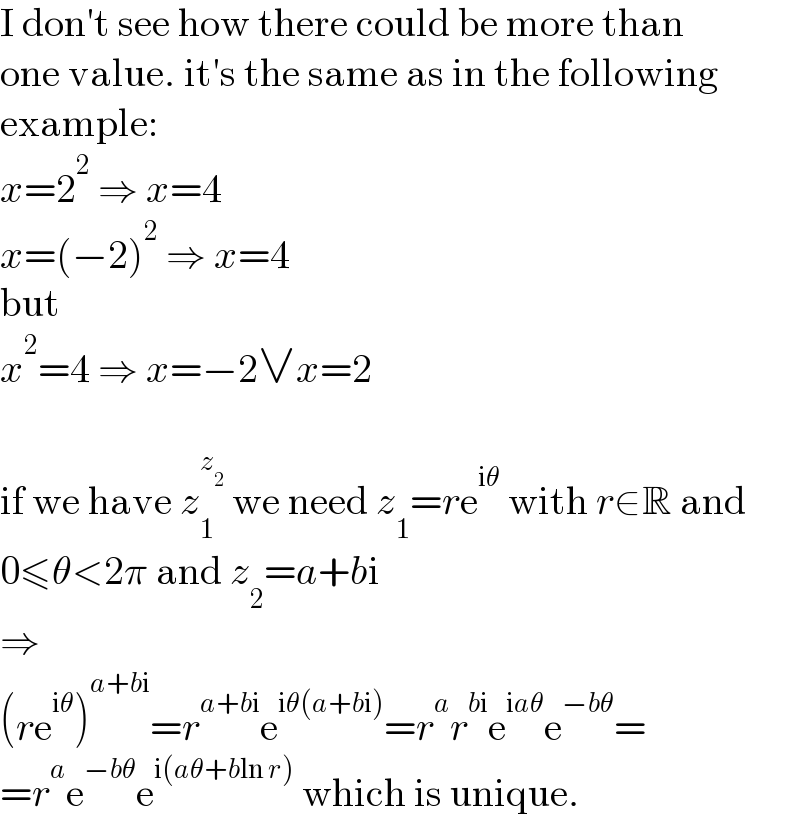
Question and Answers Forum
Question Number 156186 by DavidSmath last updated on 09/Oct/21

Commented by DavidSmath last updated on 09/Oct/21

Commented by MJS_new last updated on 09/Oct/21

Answered by mr W last updated on 09/Oct/21
![z=(2i−1)^(i+1) =[(√5)e^((π−tan^(−1) 2)i) ]^(i+1) =(√5)e^(−π+tan^(−1) 2) [(√5)e^((π−tan^(−1) 2)) ]^i =(√5)e^(−π+tan^(−1) 2) e^((π−tan^(−1) 2+ln (√5))i) it′s principal value is Arg(z)=π−tan^(−1) 2+ln (√5)≈2.839](Q156220.png)
| ||
Question and Answers Forum | ||
Question Number 156186 by DavidSmath last updated on 09/Oct/21 | ||
 | ||
Commented by DavidSmath last updated on 09/Oct/21 | ||
 | ||
Commented by MJS_new last updated on 09/Oct/21 | ||
 | ||
Answered by mr W last updated on 09/Oct/21 | ||
![z=(2i−1)^(i+1) =[(√5)e^((π−tan^(−1) 2)i) ]^(i+1) =(√5)e^(−π+tan^(−1) 2) [(√5)e^((π−tan^(−1) 2)) ]^i =(√5)e^(−π+tan^(−1) 2) e^((π−tan^(−1) 2+ln (√5))i) it′s principal value is Arg(z)=π−tan^(−1) 2+ln (√5)≈2.839](Q156220.png) | ||
| ||